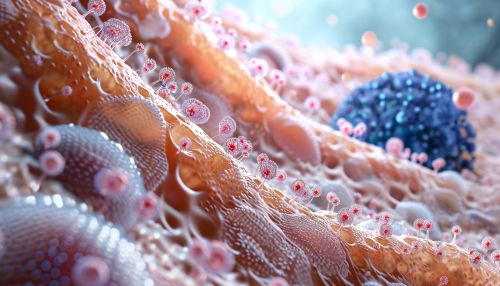Sensory biology
Overview
Sensory biology is a subfield of biology that deals with the study of senses, sensory systems, and the physiological processes involved in sensory perception. It is an interdisciplinary field, drawing on knowledge from other areas such as neuroscience, psychology, physiology, and cell biology.
Sensory Systems
Sensory systems are the parts of the nervous system that provide organisms with the ability to perceive their environment. These systems are composed of sensory receptors, neural pathways, and parts of the brain involved in sensory perception.
Sensory Receptors
Sensory receptors are specialized cells or cell structures that convert specific forms of environmental stimuli into neural signals. These receptors can be broadly classified into five main types: mechanoreceptors, thermoreceptors, photoreceptors, chemoreceptors, and nociceptors.


Mechanoreceptors respond to mechanical pressure or distortion, thermoreceptors detect changes in temperature, photoreceptors are sensitive to light, chemoreceptors respond to chemical changes, and nociceptors are responsible for the perception of pain.
Neural Pathways
Once sensory information is converted into neural signals by the sensory receptors, it is transmitted to the brain through neural pathways. These pathways consist of a series of neurons that relay the information from the peripheral sensory organs to the central nervous system.
Sensory Perception
The process of sensory perception involves the interpretation of sensory information by the brain. This process is complex and involves several stages, including detection, discrimination, localization, and recognition.
Sensory Modalities
Sensory modalities are the different ways that organisms perceive the world. These include vision, hearing, taste, smell, touch, temperature, pain, balance, and proprioception.
Vision
Vision is the ability to perceive light and distinguish colors and shapes. It is mediated by the eyes, which contain photoreceptors that convert light into neural signals.
Hearing
Hearing involves the perception of sound waves, which are converted into neural signals by the mechanoreceptors in the inner ear.
Taste and Smell
Taste and smell are chemical senses that allow organisms to detect and identify different substances in their environment. Taste is mediated by taste buds on the tongue, while smell is mediated by olfactory receptors in the nose.
Touch, Temperature, and Pain
Touch, temperature, and pain are sensed by various types of receptors in the skin and other tissues. These senses provide information about the physical state of the body and its environment.
Balance and Proprioception
Balance and proprioception are senses that provide information about the body's position and movement. Balance is mediated by the vestibular system in the inner ear, while proprioception involves receptors in the muscles and joints.
Sensory Processing
Sensory processing is the way the brain interprets and organizes sensory information. It involves several stages, including sensory integration, sensory adaptation, and sensory memory.
Sensory Integration
Sensory integration is the process by which the brain combines information from different sensory modalities to form a coherent perception of the world.
Sensory Adaptation
Sensory adaptation is the process by which the sensitivity of sensory receptors changes in response to continuous stimulation.
Sensory Memory
Sensory memory is a type of short-term memory that holds sensory information for a brief period of time.
Sensory Disorders
Sensory disorders are conditions that affect the normal functioning of the sensory systems. These can include sensory processing disorders, sensory loss, and sensory hypersensitivity.
